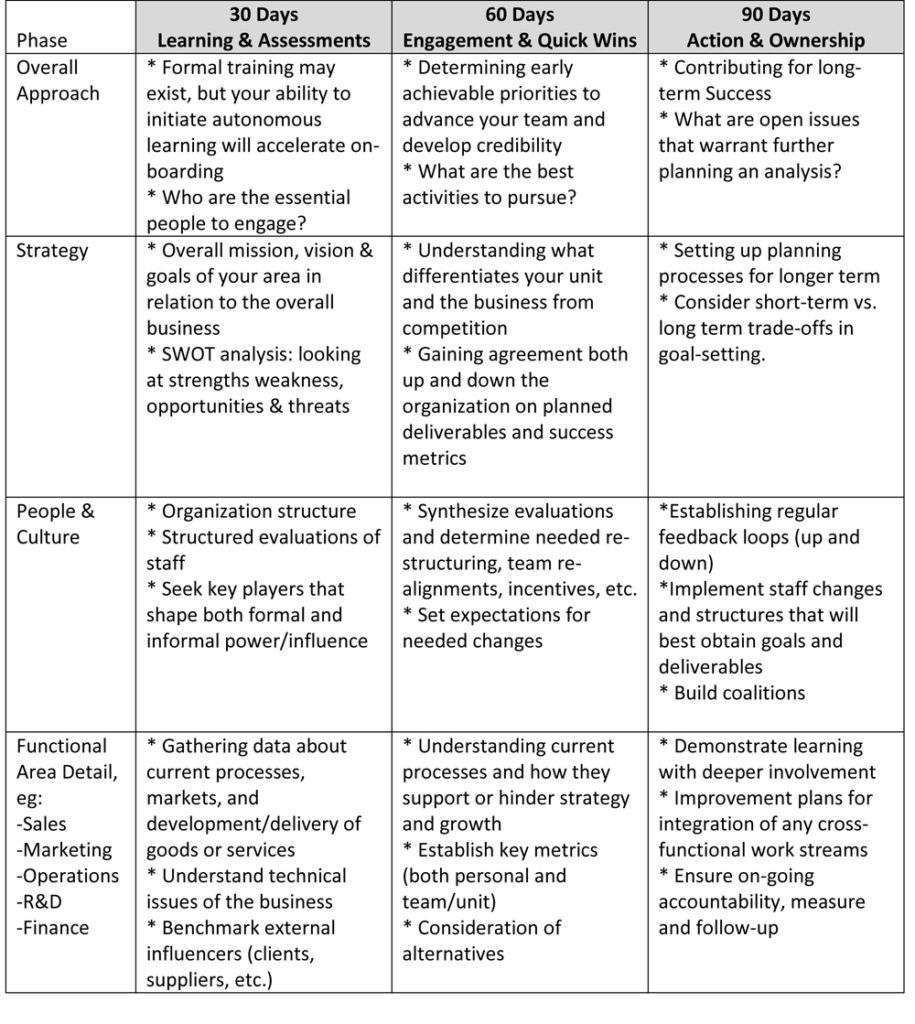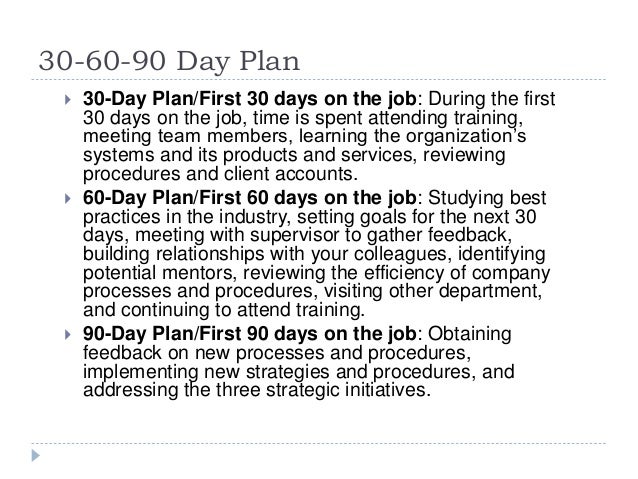


Yours might look completely different-for example, you might relegate the entirety of your 90 days to continuously learn different parts of the job, if your role calls for it. This is one example of how you might lay out your first 90 days on the job. Take what you’ve learned and apply it to your work. What are some pain points the organization or your team is facing? What else do you need to know to do your job better?ĩ0-days: Execute.

Now that you have a more solid understanding of the basics of the organization, try to see how new ideas might get folded in. The second phase can also be considered a learning phase, but try to go deeper. Ask questions, learn tools, and get to know the people on your team and the organization’s objectives.Ħ0-days: Align yourself with team and organization priorities. A typical progression might look like the following:ģ0-days: Learn as much as you can. Aim for fluency in your role by the 90-day mark. The first two phases might entail learning and aligning yourself with company goals. Think about the steps it’ll take to set yourself on track to be successful in the role long-term. Once you have a good understanding of your role, you can lay out objectives for your 30-, 60-, and 90-day marks. This might be a good time to consult your manager-or if you’re a manager, key team members-to ensure your expectations are aligned. Make sure you have a good grasp on what’s expected of you in the role. Understanding what the role’s greater purpose is for the organization will help you define the short-term goals you should set. Check with your manager to see if there are specific templates or methods the organization uses to set out 30-60-90 day plans. Generally, you’ll want to include overall objectives and specific ways to measure your progress toward those objectives.Įach goal will be different, depending on your role and expectations. Take on extra curricular activity to come up with new ideas that will benefit the business and your personal growth.The specific goals outlined in your 30-60-90 day plan can be as detailed or broad as you need them to be. Is there anything you can do differently to make things easier? What are the methods of your longer serving colleagues? What can you learn from them? Shaddow best performing colleagues in your team to gain best practises.īegin to observe and analyse your performance so far. Begin to feel comfortable and confident in your role. Improve your learning, decreasing your need for assistance as much as possible. For example, attend webinars, business events and social events. Expand on your knowledge and take all opportunities. Get creative, identify your resources and identify your support network. Get a feel for what you are going to need to do in order to be successful. Meet with your team and key stake holders put a face to your name. Start small think big from the beginning. Normally the first 30 days of a new job is all about learning and training and adapting to your new role. To do this lets take a look at a simple but effective 30/60/90 day plan to lead us on a course to success. There are certain things we can do to make our journey and transition in to a new business position as smooth and opportune as possible.


 0 kommentar(er)
0 kommentar(er)
